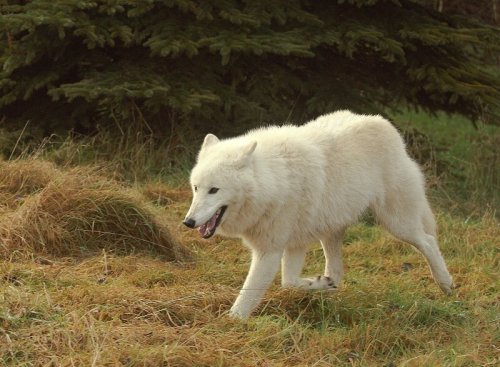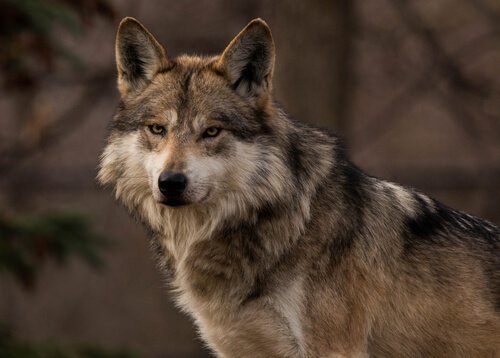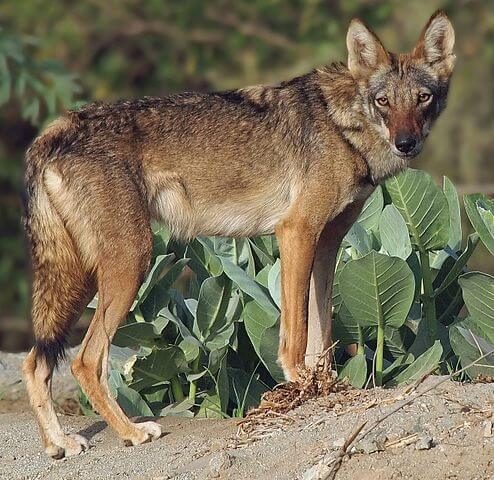6 Wolf Breeds

Canis Lupus is a carnivorous mammal which dogs descend from. They’re native to North America, Eurasia, and the Middle East, and currently their population has been reduced due to hunting and deforestation. Continue reading this article to find out about wolf breeds that are still alive today.
Traits of Wolves
Wolves are predators with teeth that are identical to those of dogs and they live in taigas, forests, mountains, meadows, and tundras. Their size and weight depend on the breed, but they vary from 60 to 90 cm tall and weigh up to 70 kg.
Wolves can hunt during the day or night due to their good sight and sense of smell, and they can walk for many kilometers without getting tired. Their fur is quite thick and separated into layers. The outer layer is waterproof and the inner layer provides them insulation from the cold. Their color varies according to their ecosystem.

When it comes to reproduction, pregnancy lasts for approximately two months. Once born, the wolf cubs have dark fur with blue eyes. They’re also deaf and blind and depend entirely on their mother. They live in the den until they’re three weeks old and leave it when they’re two months old.
The wolf is a solitary hunter. They can survive for many days without food and their prey can be larger than them. These predators hunt sheep, deer, goats, reindeer, moose, as well as smaller animals like hares and rodents.
What Wolf Breeds Exist?
Within the subspecies or wolf breeds, they live in several parts of the world such as Eurasia, Oceania, and North America. Some of the most well-known are:
1. Grey Wolf
They weigh 55 kg and, although their name comes from their fur color, they can also be black, white, or red. They have a narrower head and snout when compared to other breeds and they’re a little slower too.
They’re not the fastest but their sharp teeth allow them to penetrate three times deeper than the average canine. They communicate within the pack through different oral means of communications, such as howling, and these animals can adapt to any habitat as long as there’s food.
2. Iberian Wolf
As their name suggests, this breed lives in the Iberian Peninsula, mostly north of the Douro River, and is currently at risk of extinction.
They’re medium-sized, at about 70 cm tall and weight 50 kg. Their fur has dark patches on their tail, their head is large and solid, and they have triangular ears. They’re carnivores and mainly eat good-sized mammals and herbivores.
3. Arctic Wolf
This example is a subspecies of the grey wolf and its fur is completely white to camouflage it with the snow. It mostly eats caribou and oxen, and lives mainly in the icy areas of Alaska, Greenland, and Canada.
in order to survive the extreme cold, it relies on an outer layer of skin which thickens during the winter. Its ears are also small to maintain and regulate body heat, whilst its feet are padded so it can walk well over the snow and ice. They live in packs and are quite territorial.

4. Arabian Wolf
This breed lives on the Arabian Peninsula, especially in Iraq, Jordan, Egypt, and Israel. They eat hares, sheep, goats, and roadkill. Their population have increased since their hunting was banned in Oman, though they don’t form large packs.
As for their appearance, they’re a relatively small size and fur is short with a fine grayish color. They don’t have sweat glands so they pant to control their body temperature.
5. Red Wolf
This species comes from North and South Carolina and its name comes from its reddish-brown fur. It has a white mark around the mouth and a large head and ears.
Although this breed tends to be quite sociable, they do maintain a hierarchy in their packs. As for reproduction, it takes place during the months of February and March and the females can give birth to up to 10 cubs. Despite this, sadly, this breed of wolf is at a serious risk of extinction.
6. Ethiopian Wolf
Finally, people tend to confuse the Ethiopian Wolf with the Jackal because of its physical build and medium size. This breed has a more pointed snout than other species and their coat can be red, white, or brown.
This is a breed that’s exclusive to Africa, whose habitat is close to the mountains and on some plains. Their personality is less territorial and aggressive than other wolves, they travel in packs of six, and mainly eat rodents.
- The following are other wolf breeds that weren’t mentioned in this article: Himalayan, Indian, Italian, Romanian, Eurasian, Tibetan, Japanese, Mexican, Newfoundland, Alaskan Tundra Wolf, and the Coyote.